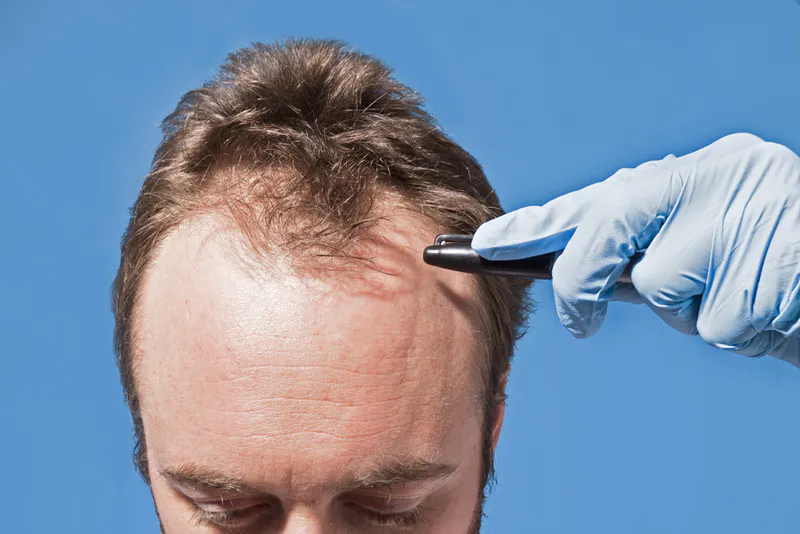Can Finasteride effectively prevent and reverse hair loss, particularly for receding hairlines?
The short answer is yes. Finasteride is specifically prescribed for this condition and has demonstrated positive outcomes.
While individual responses vary, clinical studies show promising results. In a two-year trial, 48% of men experienced improved hair growth after one year of Finasteride use, increasing to 66% after two years – compared to just 7% in the placebo group. This improvement includes both new hair growth and restoration of thinning areas.
For maintaining existing hair, Finasteride shows even greater efficacy. The same study found 83% of users halted further hair loss, versus only 28% in the placebo group.
In conclusion, Finasteride has proven effective against hair loss and receding hairlines, with a majority of users experiencing beneficial results.

How does Finasteride work?
Finasteride works by inhibiting the conversion of testosterone to dihydrotestosterone (DHT). While DHT stimulates body hair growth, it negatively affects scalp hair in men predisposed to male pattern baldness. By reducing DHT levels, Finasteride protects hair follicles from damage. Research indicates that a daily 1mg dose can decrease scalp DHT by over 60%.
Clinical measurements show DHT reduction ranging from 14.9% at minimal doses (0.01mg) to 69.4% at higher doses (5mg). Serum DHT levels decreased significantly (49.5%-72.2%) at therapeutic doses of 0.05mg-5mg.
How quickly does Finasteride work?
Visible results with Finasteride require patience. Initial changes may appear after three months, but significant improvement typically takes a year. Maximum benefits may require two years of consistent use due to hair’s slow growth cycle.
Similarly, if treatment stops, hair loss resumes gradually – it may take up to a year for regrown hair to shed completely.
What happens when stopping Finasteride?
Discontinuing Finasteride allows DHT production to resume. Hair loss doesn’t occur immediately – as DHT levels gradually increase, follicles weaken over time, eventually ceasing hair production.

Is Finasteride superior to Minoxidil?
Comparative studies show Finasteride’s greater efficacy – 80% of users saw increased hair density versus 52% with 5% topical Minoxidil.
Clinical evaluations confirmed these results, with 80% improvement in the Finasteride group compared to 52% in the Minoxidil group.
Potential serious side effects
Some users report sexual side effects like reduced libido. While most recover after stopping treatment, a small percentage may experience prolonged symptoms lasting months or years.
Understanding Propecia
Propecia is the brand-name version of Finasteride for hair loss treatment. While identical in function to generic Finasteride, it typically carries a higher price tag.
Purchasing Finasteride online
MedsBird offers convenient online access to affordable Finasteride. Our streamlined process allows you to order in minutes – simply add to cart and complete checkout.
References:







